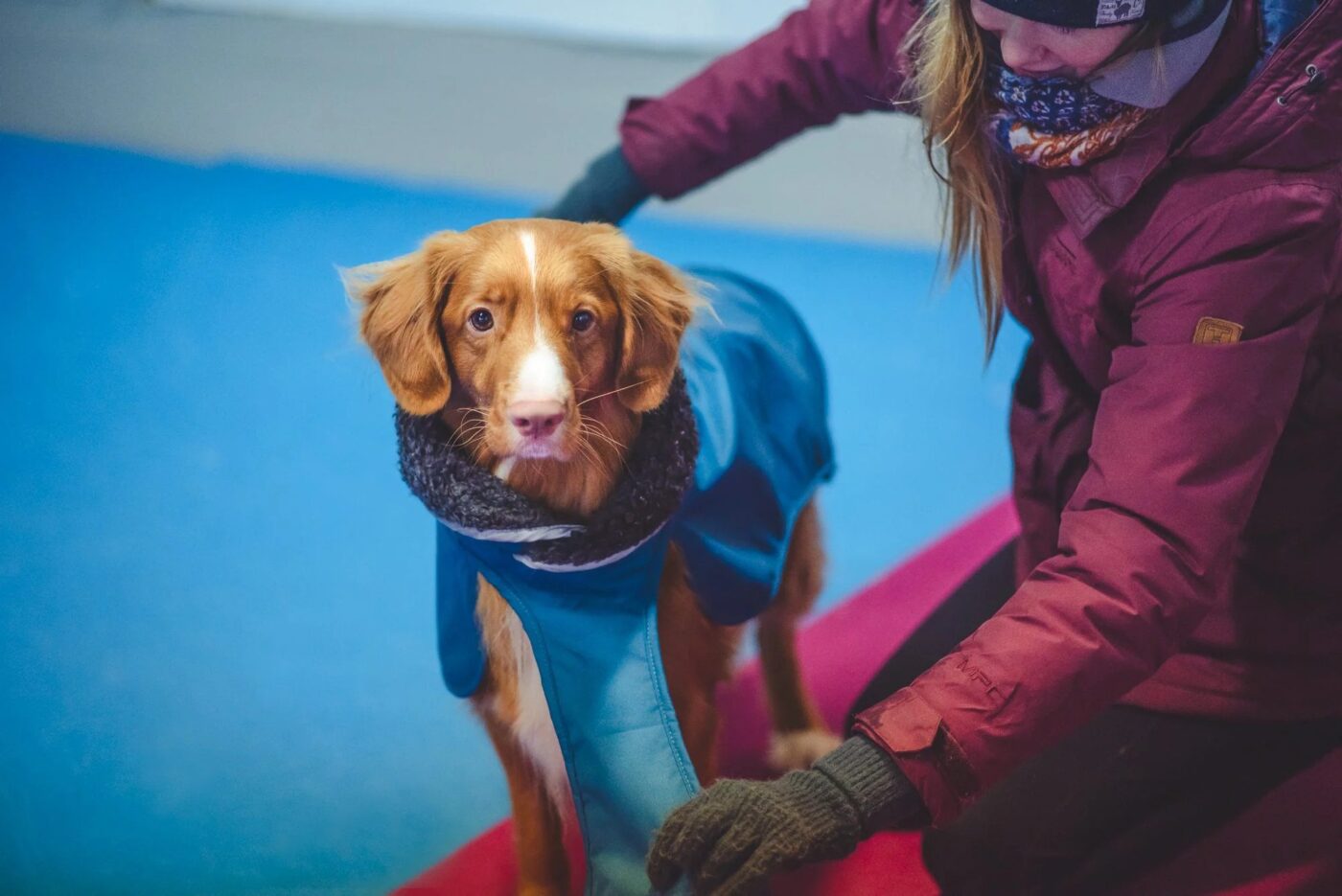“I am dog training instructor Jasmin Kujander. I’ve had a chance to learn about the cooperative care method from the best trainers in the industry, and apply my learnings to our daily life with my dog Eino. Cooperative care is also strongly present in my dog training classes, where each dog is given the opportunity to choose and affect the training situations. When dog gets to choose whether they want to train or not, they truly are a motivated training partner! However, in this blog post we’re going to focus more on how to dress up your dog using cooperative care method: where the dog gets to be an active participant, choosing to be dressed up – instead of being a passive partaker, who is dressed up.
Putting on a coat for your dog may be a really mundane thing. Many of us haven’t even stopped to even think that there could be an alternative for the “traditional” way. For others, dressing up the dog can be a really difficult process, like the worst part of walking your dog, even if the coat is a must-wear in cold and wet weather. From this post, I hope you’ll be inspired to observe your dog’s behaviour and learn what they are telling you, and utilize these cooperative care methods in your daily life!
It doesn’t matter whether you have difficulties in this area or not, as every shared training session will improve the relationship between you and your dog!
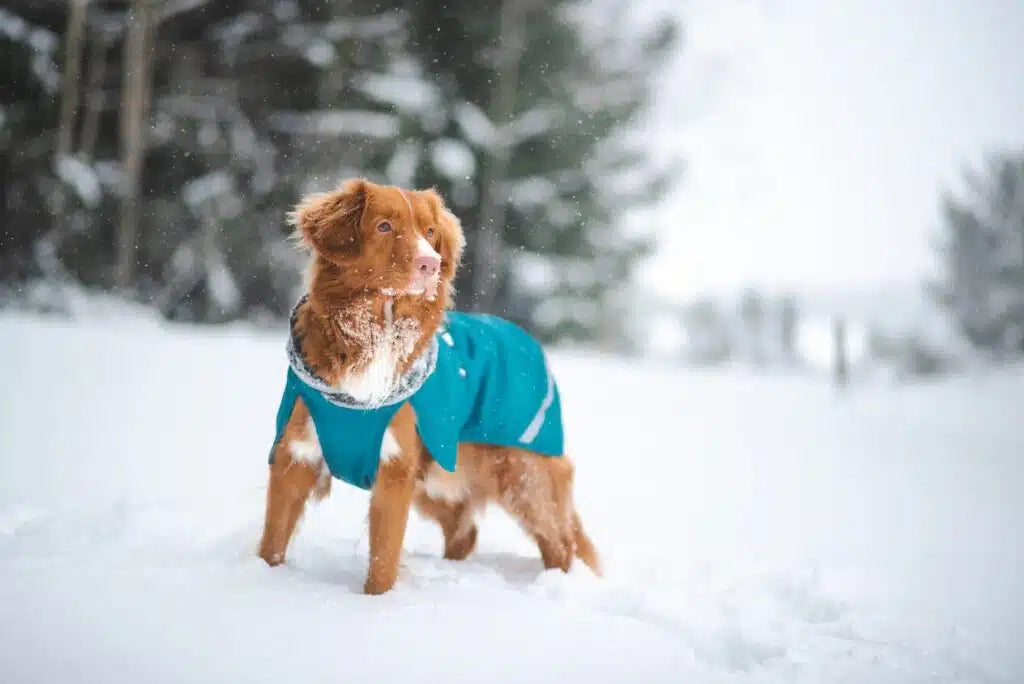
Why Cooperative Care?
Cooperative care method allows you to get to know your best friend better, and take into account them as an individual with their own preferences and desires. It’s all about interaction and listening, it is not luring, bribing or a trick. Cooperative care can help increase your dog’s self-confidence and well-being as they have a chance to affect in their own lives. Cooperative care also strengthens the bond between you and deepends your dog’s trust as they realizes they are being listened to!
If your dog does not like wearing coats, forcing it on or holding them still will often make things worse. Dogs learn fast and can begin to avoid situations and things that lead to dressing up. By allowing your dog to be an active participant, they can choose the right pace at which they are comfortable to proceed. In this case, you should try to understand which steps of dressing up your dog finds uncomfortable or is afraid of. Is it the moment you approach them with the coat, or when their head is pushed into the coat, or the touch of the coat’s fabric, the weight of the coat, tightening up the belt… Or perhaps the most uncomfortable part is taking off the coat? There are many options and there can also be multiple steps your dog finds uncomfortable. Each step should be trained separately, so that dressing up becomes a positive experience for the dog and a chance to earn tasty rewards.
If your challenges are extensive, do not be left alone. I recommend contacting your local professional animal trainer who has experience in solving similar issues using cooperative care methods and positive reinforcement.
Where to Begin?
In cooperative care, the dog gets to be an active participant. For these training sessions, you need to have a valuable reward for your dog. Usually small pieces of tasty treat are a very efficient choice in these type of training sessions, as they allow you to have multiple fast repetitions. But most importantly, the reward needs to be valuable for your dog.
If you and your dog already have some challenges with dressing up, it’s good to recognize what causes them. You can find multiple possible reasons presented above, describing each step of putting on a coat for your dog. Can you recognize the cause? Also, consider the location of the training session: are you training in the hallway, where your dog may already have made an association of dressing up meaning going outdoors, yay! On the other hand, if your dog’s first instinct is to run away from the coat, you may want to consider training somewhere else, like in the living room. You can always take the training back to the hallway later, as soon as your dog is ready.
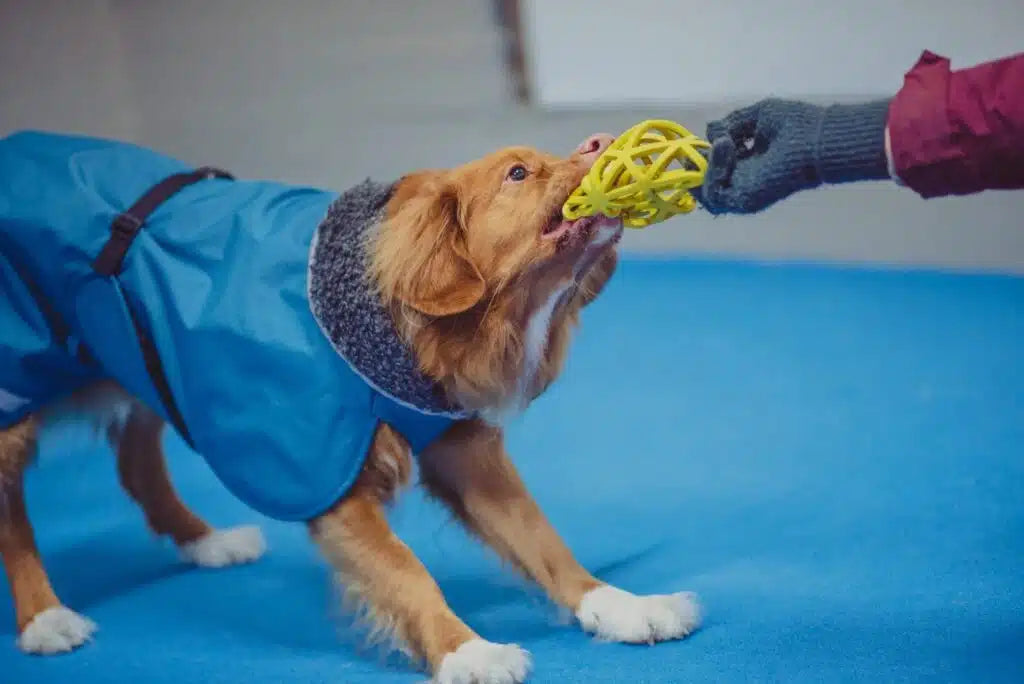
What does cooperative care mean?
- The dog is allowed to be an active participant and approach you by themselves
- The dog is dressep up only after they give you the signal
- Carefully observing the expressions and body language of the dog
- Observing how enthusiastic or worried the dog is when returning to the training session after giving them a release cue (i.e. throwing a treat away from you)
Cooperative care emphasizes the way you listen to your dog, pay attention to their emotional state, and the mutual desire to cooperate. It is not about setting down conditions for your dog, but rather a healthy way to interact with a friend.
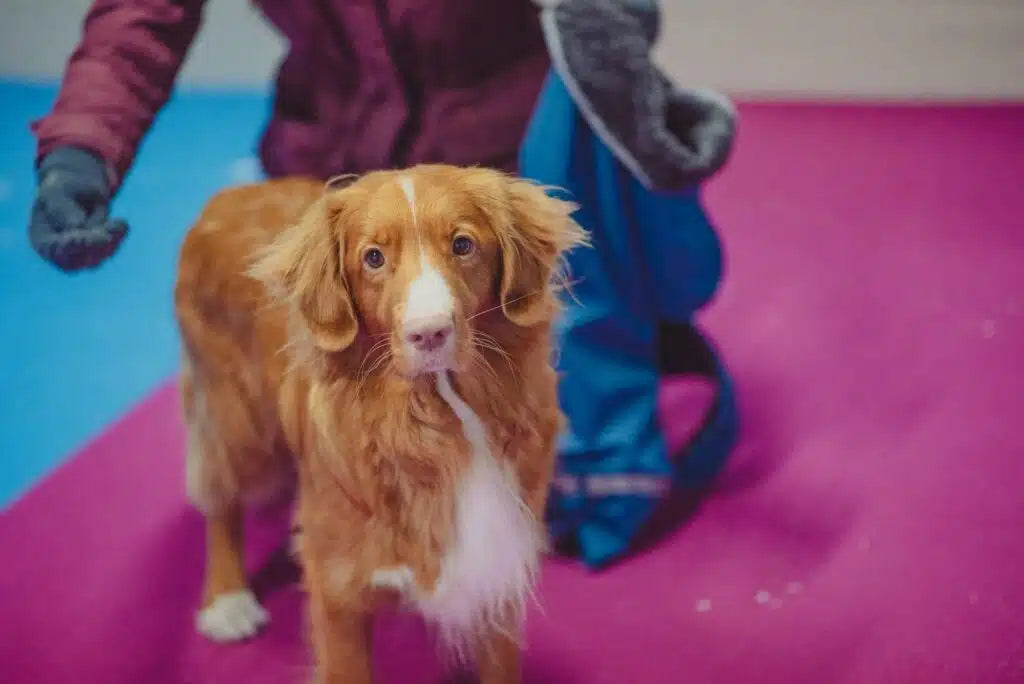
Is Your Dog’s Gear Comfortable?
It is important that the dog’s gear, including the coat, is suitable for the dog. The gear should be correctly sized and stay in place, not rub or chafe your dog. You can find plenty of information from Pomppa’s website on how to choose the right product or size for your dog!
Permission To Proceed
Cooperative care is based on the dog having the opportunity to say “yes” and “no”. By saying yes, the dog gives a permission to proceed, whether it’s about training, doing a treatment, or in this case, putting on a coat. The training session should always be planned beforehand in a way that the dog should never feel the need to say no. But if this happens, at least the dog should be allowed to do this and be listened to. Here are examples of ways your dog can learn to indicate when it’s ready to proceed with dressing up:
- Pushing their head through the coat’s collar, thus them approaching the coat is a signal to proceed
- Lifting their front paws on a target, for example on a board or pad. Thus paws touching the target is a signal to proceed.
- Putting their nose against a target, for example the palm of your hand. Touching the target with their nose is a permission to proceed.
Next, we’ll go through how to teach your dog to give a permission to proceed by pushing their head through the coat’s collar.
Signal by Pushing the Head Through the Collar
1. You can teach the concept by first using an easier object, and slowly make the sessions more challenging as the dog’s skills grow. For example, start with a firm leash that you loop into a loose circle. Afterwards you can move on to a dog collar, and then to a coat.
2. The dog is first rewarded from approaching the looped leash. Use a clicker or a reward cue if you have one. Reward your dog a few times near the leash, but then release the dog further away to get them to approach the leash again by themselves.
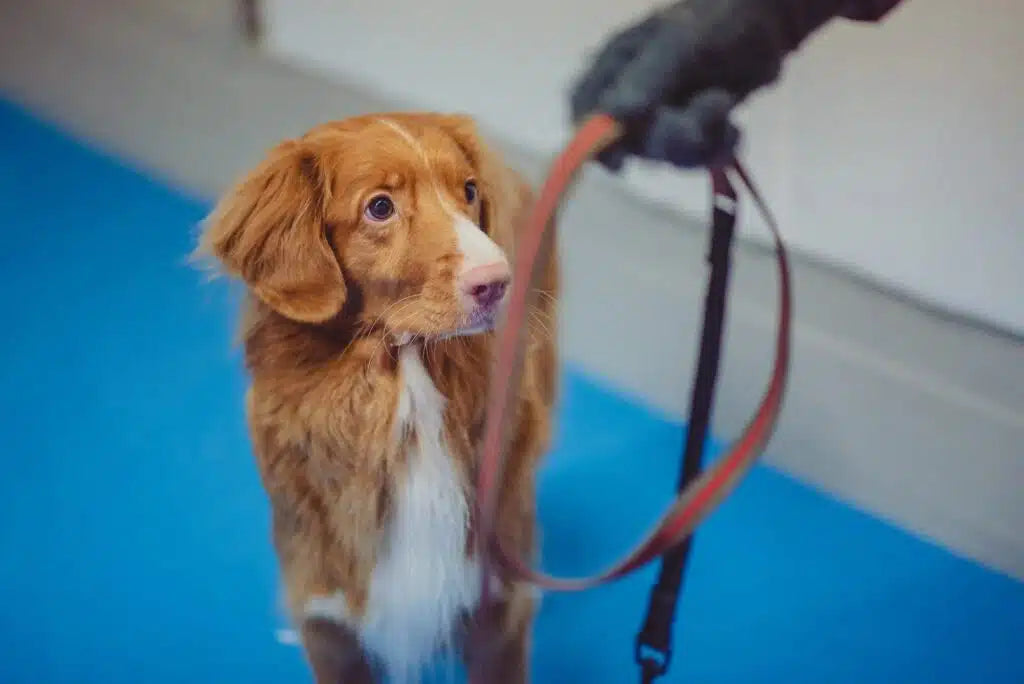
3. Wait for the dog to approach more, possibly even touching the leash with their head or nose. By rewarding the dog from the direction of the leash, we tell them that approaching the leash is a good thing, but be careful not to lure or lead your dog too much.
4. Let your dog figure it out by themselves and offer pushing their head deeper into the looped leash! If your dog is not offering the desired behaviour, try feeding the treats through the loop. However, be careful not to lure or pressure your dog too much.
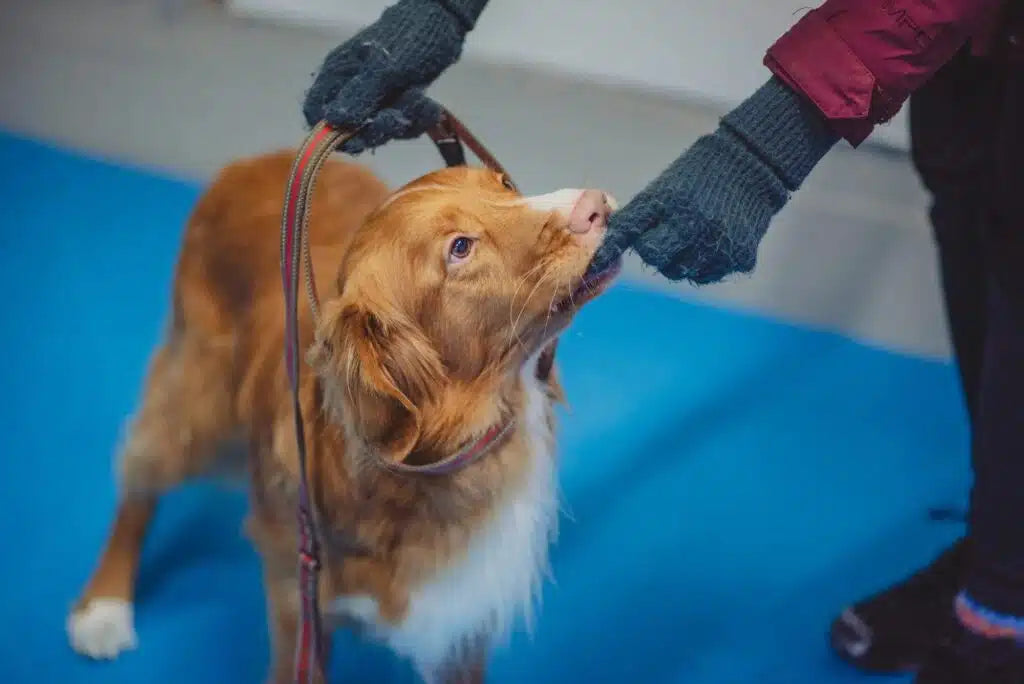
5. When your dog knows how to push their head through the leash, you can switch to a dog collar and start over.
6. Move the collar slowly as the dog pushes their head through to get them used to the movement. Keep an eye on your dog’s expressions, be careful not to overwhelm them!
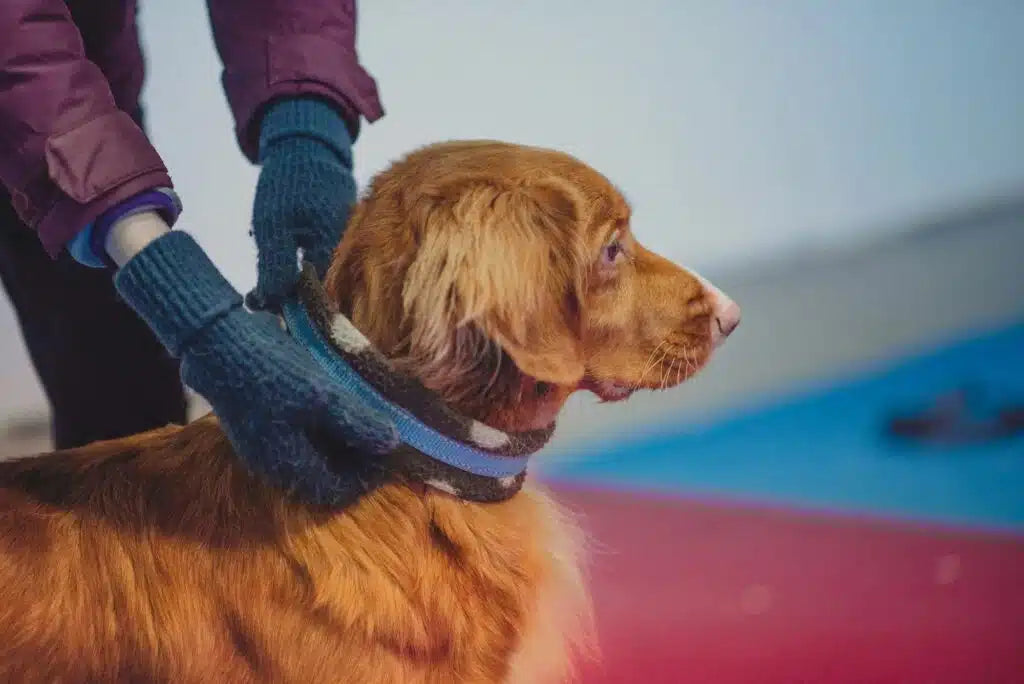
7. When your dog is familiar with the easier objects, see if you dog is willing to push their head through the coat’s collar. Be sure to always make the exercise easier when you introduce a new object. Give your dog time to figure out that they need to offer the same behaviour as before.
8. Be careful not to push the coat on too fast. If your dog starts to back up, be sure to withdraw the coat as well. Make the next exercise a bit easier to make sure your dog does not feel the need to say “no”.
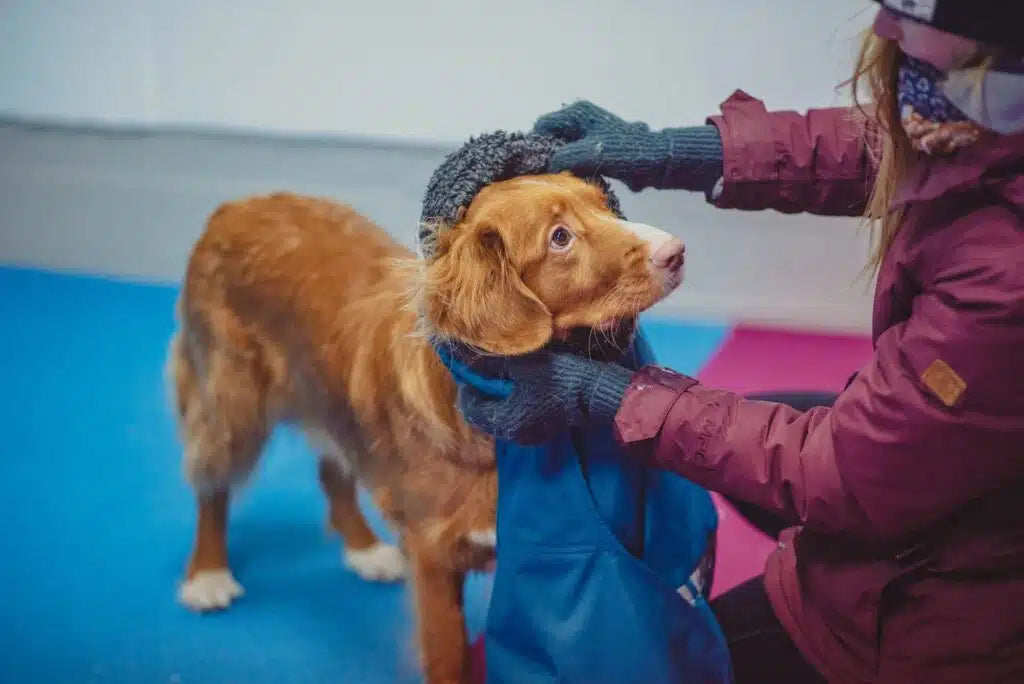
Please note that some coats may have a longer and tighter collar, so that the dog is not able to push their head all the way through by themselves. With these type of coats, I have taught my dog Eino that by approaching the coat and pushing his head into the collar just slightly, I get to continue the movement and push the collar through the tightest spot. I just have to be ready to withdraw the coat myself if Eino is starting to look uncomfortable.
Wishing everyone joyful training sessions and fun times learning and striving towards a more seamless companionship together!”
– Jasmin & Eino / @eino.ja.ninja

